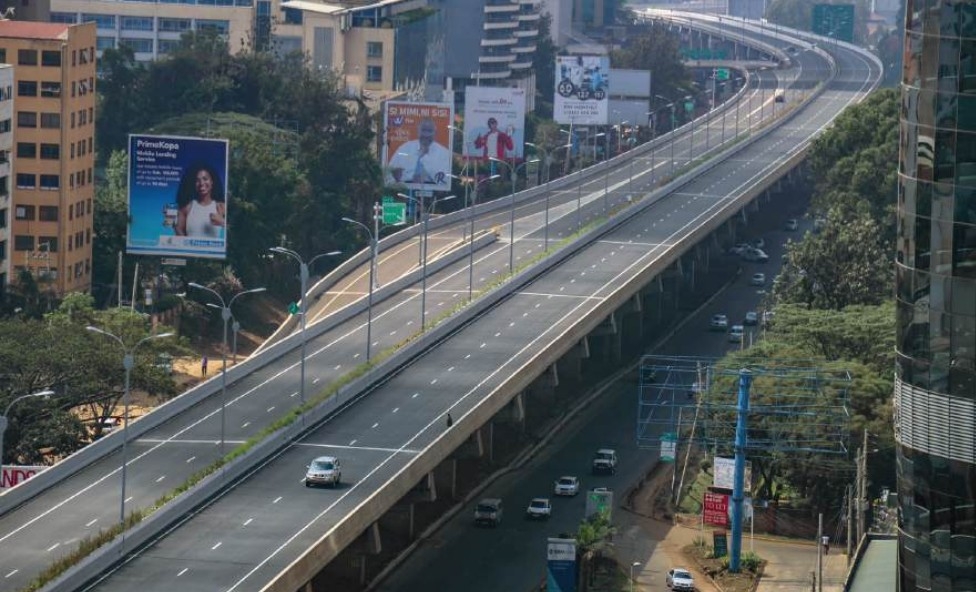
Airplanes
belonging to
Kenya Airways
being serviced
at the Jomo
Kenyatta
international
Airport on March
6, 2019 /FILE
Happy Diwali dear reader! My attention has been drawn to a very interesting scenario whereby Kenyans are becoming cynical about many projects initiated by the government, thus ending up in courts leading to the delay in their implementation.
It’s interesting to note for example, that the Universal Healthcare reforms, popularly known as SHA or SHIF, have been delayed for close to a year, ever since the three new pieces of legislation were assented to by President William Ruto on October 19, 2023 at State House, Nairobi.
President Ruto had set March 1, 2024, as the commencement date, yet this was delayed by a whopping 7 months to October 1, 2024, due to a myriad of court cases and industrial action by doctors and other medical professionals.
Change is always resisted. THE BETA PLAN is a very progressive manifesto that identifies priorities namely; agriculture and food security, universal healthcare, housing and urban development, micro, small and medium enterprises and digital superhighway and the creative economy, as the key drivers of our economic development.
These five pillars require not only the enabling policies and legislations but also key projects that will help in their realisation. For example, the fertiliser subsidy program has worked wonders in helping reduce the cost of living.
The lowering of the monthly contribution from Sh500 to Sh300 has increased the number of beneficiaries who are at the bottom of the pyramid.
In addition, the increase of contributions by the salaried Kenyans means that there will be adequate resources to refinance our healthcare for all.
The housing programme is also well resourced using the housing levy that has enabled the cost of owning a home to go as low as Sh500,000 for the hustlers. Indeed, the HustlerFund has enabled over 22 million Kenyans to borrow over Sh51 billion so far, thus boosting their businesses and enterprises.
However, there are some huge infrastructural projects whose financing cannot be left to taxation or borrowing alone.
This is because of the reduced borrowing space due to pre-existing debt prior to the coming into power of the 5th administration and also the fall of the Finance Bill, 2024.
This has led to the government to deploy the Public Private Partnership as an alternative to development financing. Kenyans have been led to believe that this isn’t a viable option through misinformation, disinformation and propaganda. Vested interests are largely to blame for this scenario due to inertia with an aim to derail progress in order to maintain the status quo that is beneficial to them.
The most famous project that has been in the public domain is Adani JKIA Privately Initiated Programme, aimed at developing a new terminal in order to help accommodate more passengers since the 1978 infrastructure isn’t in the best of conditions, as it can only harbour 7.6 million passengers against the current 8.2 million.
The Adani group has proposed to build a new terminal occupying about 3,000 of the 11,000 acres of land at an estimated cost of Sh267 billion.
This project has stalled for over a decade, yet if implemented; it will transform our airline industry and position Kenya as a true regional commercial hub. Other countries such as the UK have had similar partnerships to expand Heathrow airport at a cost of Sh2.3 trillion through PPP.
In fact, the Hexagone-Balard building that hosts the headquarters of the French military was financed through a PPP model.
This also applies to terminals 1 and 6 of the John F Kennedy Airport in the USA and many other examples around the world. Here in Kenya, the expressway, which has been instrumental in not only reducing traffic to and from the city, is a PPP project.
The 1,050 Ruiru Affordable Housing Project is another example that is working pretty well.
Adani Energy has also proposed a Sh95 billion geothermal power project that will help reduce power black outs and increase supply to emerging cities such as Nakuru, Meru, Naivasha etc. It’s important to note that there are many advantages of PPPs such as reducing public debt.
The government is able to reallocate resources that would have otherwise been used for certain projects to shift to other priorities. There is also the sharing of the risk with the private investor.
The monies so invested have a greater return on investment due to efficiency and use of modern techniques of management.
In addition, there is a high level of innovation in the projects in order to increase efficiency and profitability.
The private sector is able to do knowledge transfer to the government side due to this partnership.
Further, there is also technology transfer that ends up being useful to the country including its deployment in other government projects and programmes.
This means that even for the staff that would be transferred to work under the concessionaire, they are able to become more productive by making progress in their personal career development. Moreover, PPPs have proven to improve the quality of products and services, hence ending up benefiting the common mwananchi.
With the current economic situation, it’s important for us as Kenyans to embrace PPPs as a new form
of financing our development, otherwise we risk being left behind by
our neighbours, yet we are heretofore
the economic powerhouse of the East
African Region.





![[PHOTOS] Ruto dazzles in colourful maasai outfit](/_next/image?url=https%3A%2F%2Fcdn.radioafrica.digital%2Fimage%2F2025%2F11%2F8ccfbfe5-a43a-49b3-88f4-b99a41be4594.jpeg&w=3840&q=100)











